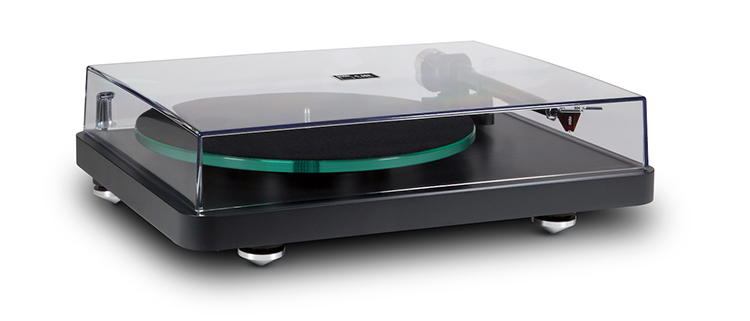
And they’re all wrapped up into an attractive record-playing package that’s sure to complement any décor. It doesn’t take much more than removing the pieces from the box, assembling them, balancing the tonearm (more on that later), and plugging it into your system to get music coming out of your vinyl collection.
NAD Electronics C 588 belt-drive turntable
- Precision isolated AC motor and power supply with universal voltage
- Fully adjustable tonearm
- 10mm glass platter with felt pad
- 9-inch carbon-fiber tonearm with fixed headshell
- Ortofon 2M Red MM cartridge preinstalled
- Rigid MDF plinth
- Adjustable metal feet with tuned isolation
- Low-resonance dustcover
- Detachable high-quality RCA cable with separate ground
I like playing vinyl records. A lot. I happen to have quite a few machines for playing them: eight, as a matter of fact, as of this writing. I like taking those machines apart and putting them back together. I like tweaking and adjusting them to get the best sound quality out of them as I can. And I like sitting down and enjoying the sound of music played from a vinyl record. I have never been without a record player for my entire life.
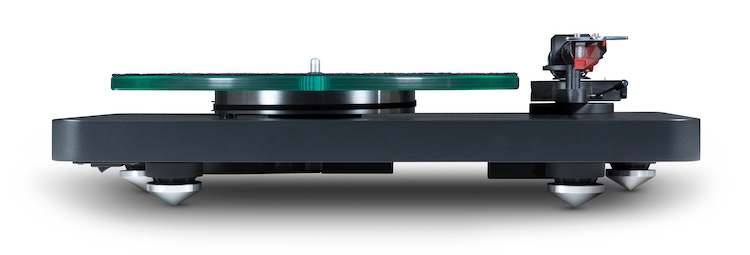
But sometimes, I just want to plug in a player and quickly get to the listening part, with a minimum of fuss and bother. And this is where the NAD Electronics line of turntables comes into play. Late in 2018, the company introduced three turntables: the C 556 ($399), the C 558 ($499), and the C 588 ($799). What distinguishes the C 588 is that more attention and materials science have been applied to the power supply and vibration control, which goes a long way to enable the hardware to get out of the way and let more of the music come through.
The C 588 is an attractive turntable. Understated in black, smoked plastic, and silver metal, it is sure to complement most any style of décor. The dust cover will protect fragile parts from the curious fingers of children, and it’s nice to have something that will keep dust off of the platter and stylus.
So how easy was it to set up and how did it sound? Let’s find out.
DRIVE SYSTEM:
Belt
MOTOR:
Precision AC motor
SPEED:
33 1/3, 45 rpm
78 rpm possible with special pully
SPEED VARIANCE:
33 rpm: < ± 0.35 %, 45 rpm: < ± 0.30 %
WOW AND FLUTTER:
<0.01% (ref. 1 kHz, Audio LPF)
SIGNAL/NOISE RATIO:
-70 dB
DOWNFORCE RANGE:
0 to 30 mN
0 to 3.0 grams
SUPPLIED COUNTERWEIGHT SYSTEM:
Counterweight for cartridges: 6 to 16 g
VOLTAGE:
Universal switch mode power supply
15 V DC/0,8 A, 100-240 V AC, 47 to 63Hz
POWER CONSUMPTION:
5 w maximum, 0.3 w standby
PLATTER:
10mm glass with felt pad
AUTO STOP:
No
TONEARM TYPE:
Static balanced, straight 9-inch carbon fiber
EFFECTIVE TONEARM MASS:
9.5 g
EFFECTIVE TONEARM LENGTH:
230 mm
TONEARM OVERHANG:
18 mm
ANTI-SKATING:
Yes, adjustable
HEADSHELL MOUNT:
Fixed
ORTOFON 2M RED CARTRIDGE
TYPE:
Moving magnet (MM)
FREQUENCY RANGE:
20 to 22,000 Hz
CHANNEL SEPARATION:
22 db/1 kHz
OUTPUT VOLTAGE:
5.5 mV
RECOMMENDED LOAD IMPEDANCE:
47 kOhms/amplifier connection: MM input
COMPLIANCE/STYLUS TYPE:
20 μm/mN/elliptical
RECOMMENDED TRACKING FORCE:
18 mN / 1.8 g
WEIGHT:
7.2 g
GROSS DIMENSION:
17 1/8 x 13 7/16 x 4 15/16” (435 x 340 x 125mm)
SHIPPING WEIGHT:
9.2 kg (20.3 lbs.)
MSRP:
$799
Company:
SECRETS Tags:
NAD Electronics, belt-drive, turntable, record player, Ortofon, Turntable Reviews 2019
The NAD C 588 is a belt-drive turntable. Its motor drives a precision pulley with two size positions on it; the bigger size is for 45 rpm records, and the smaller size is for 33 1/3 rpm records. You apply a rubber belt between the pulley and its precision alloy sub-platter. These moving parts are mounted into a single rigid black MDF plinth with four adjustable metal feet attached. You place the turntable’s glass platter upon the sub-platter (while wearing the included white cotton gloves to keep fingerprints away), then place the felt mat upon the glass platter.
With the record spinning, the machine’s high-precision and synchronous clock motor work its magic. It cleans the AC voltage feeding the motor by converting it to DC then generating new, precise AC voltage which then feeds the motor. If the speed of the platter wobbles between 32 1/3 rpm and 34 1/3 rpm, it is going to affect the rhythm and timing of the music and just plain distract you. The human ear can easily detect if the pitch of a singer’s voice changes. The C 588’s motor makes an effort to ensure that doesn’t happen.
The C 588 features a straight, 9-inch long tonearm with a fixed headshell. It’s a straight tube of lightweight and very rigid carbon fiber. Its weight and straight shape help to minimize tracking errors and optimize cartridge overhang. And it already has a $100 Ortofon 2M Red moving-magnet cartridge installed.
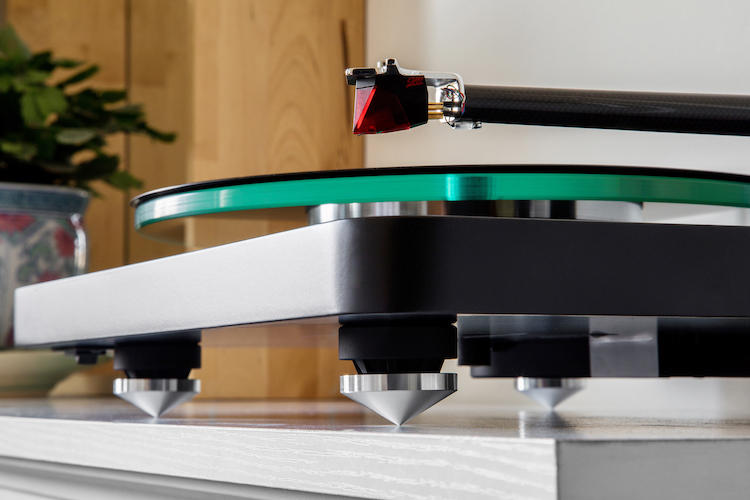
The turntable arrived very well packed; there was ample padding around the fragile glass and plastic parts to ensure it all arrived intact. First, I removed the plastic bag containing the installation instructions. It’s a one-page sheet graphically describing the assembly procedure. Imagine if you had bought a table from Ikea; that’s what it looks like.
These instructions are straightforward and easy to follow, but they did not address that the tonearm’s counterweight must be attached and then the tonearm’s vertical tracking force set. For those instructions, you must head to the Internet. NAD provides data sheets, quick setup guides, and full manuals for the turntable.
NAD includes white gloves with the turntable, which is a nice touch. It’s best to prevent getting finger oil on the rubber belt, sub platter, or glass platter. So, I put on the gloves and placed the unassembled plinth on my stereo cabinet. Next, I attached the rubber drive belt between the motor pulley and the sub-platter, ensuring it was flat against all surfaces it makes contact with. I initially put the belt on the 33 1/3 rpm position. Then I put the glass platter on the sub-platter, then the felt mat on top of the glass platter. Then I attached the dustcover by sliding it onto the spring-loaded mounting shafts on the back of the plinth.
Keep in mind that the points of the four metal feet are rather sharp and are likely to put holes or marks in wood furniture. Included with the turntable are four small round black metal discs that you can place under the points to protect your furniture. Nice. After you have installed the discs under the feet, you can twist the feet to adjust the plinth until it is level. Small bubble levels come in handy for this exercise.
Balancing a tonearm and setting the VTF of the cartridge is fairly straightforward, but it does require good vision, a steady set of hands, and some practice. If you are eager to get the C 588 set up as soon as possible and you are afraid of messing something up or breaking a stylus, I’d recommend asking an analog-friendly friend for help. Or buy the turntable from a local dealer who can perform the setup for you.
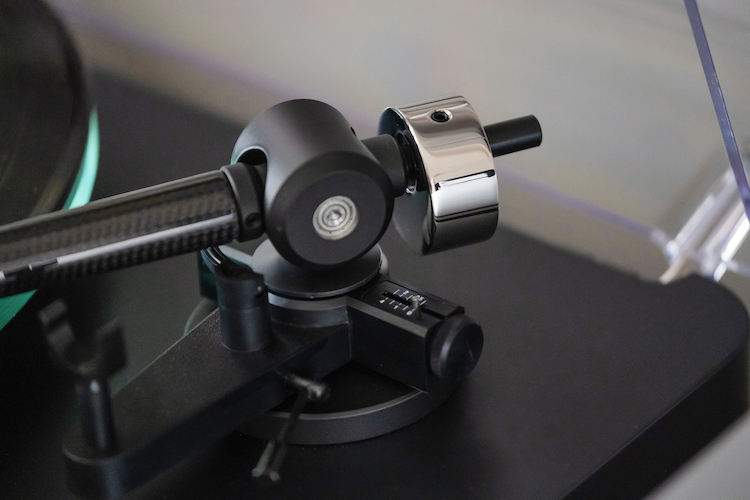
That said, I’m no stranger to setting up a tonearm and took care of it myself. But it had its surprises.
The tonearm uses a standard type of counterweight, with a sunken grub screw to secure the counterweight to the tonearm after you’ve found the correct location for the correct VTF. The hexagonal key for tightening the grub screw is also included. It’s interesting to note that the hole within the counterweight has a rubber gasket inside of it, which is something I had not encountered before. The gasket adds some stickiness to how the counterweight sticks to the tonearm, which is a good idea. But where it became problematic is when I had to fine-tune the position of the counterweight after I had balanced the tonearm. The gasket made it impossible to precisely move the counterweight back or forward.
The recommended VTF for the Ortofon 2M Red is 1.8 g, and I can use my digital VTF gauge to get exactly that. I could not achieve that VTF accuracy with this tonearm and counterweight. The best I could do was 1.788 or 1.822. Yeah I know, it’s not perfect and close enough, but these discrepancies can add up in some situations. For the record, NAD does include a nifty VTF gauge with the turntable; it’s a plastic scale with small indentations of 1 gm, 2 gm, 3 gm, and higher. You put the turntable spindle through the hole in one end of the gauge and move it around until the stylus will fit into the indentation for the VTF you’re shooting for. When the gauge is balanced with the stylus placed on it, you’re at the correct VTF.

The signal cable terminals are situated on the rear of the turntable under the tonearm. The braided wire within the signal cable appears to be silver-coated copper, but I could not verify that. Either way, it’s not so flimsy to make you think NAD skimped on this detail. I was pleasantly surprised not only that a signal cable was included with a turntable at this price, but it was also of a higher quality than I’d expect. I then attached the included signal cable and its ground wire between the table and my Ray Samuels Audio F-117 Nighthawk phono preamplifier.
The external switch mode power supply comes with three interchangeable power plug adapters. You choose the one appropriate to the kind of power plug used in your neck of the woods, then plug it all into your AC power plug. The plug is a standard-sized wall wart type, so if you don’t have a plug available in an outlet, you’ll need an extension cord. I use an APC H10 power conditioner and this power plug would not fit directly into the terminals on its back, so I used a 6-inch power extension cable.
All in all, it took me about an hour to get the turntable set up into its default settings. It is possible to further refine the turntable if you later decide to mount a different cartridge (more on that later). The tonearm’s vertical tracking angle (VTA), anti-skating, and azimuth can be adjusted. Even the height of the pulley can be adjusted if it ever slips down. NAD provides an excellent manual describing the finer points of configuration the turntable here.
If I could describe the NAD C 588 turntable with one word, that word would be “fun.” The music was lively with a good sense of rhythm and timing. It definitely got me tapping my toes. It was not the last word in detail; I could not hear ultra-low-level details like breath against a microphone or the creak of the wooden stool a songwriter was sitting on when she sang, but one can’t really expect that sort of resolution and detail at this price point. The music played by this turntable did not draw me in so much as make me want to just go with it and enjoy. Like listening to music at a party.
Channel separation and soundstaging were good enough for me to hear where the drums were placed with rock music, and I could hear the shimmer and decay of cymbals over the rest of the music fairly well. I could get a good sense of the flow of a note – I could distinguish it in relation to other notes happening at the same time, and yet still hear its beginning, middle, and end. With acoustic jazz albums, I could place the drums, bass fiddle, piano, and horn player on the soundstage.
I didn’t hear any distracting sibilance as the tonearm approached the inner grooves, which is something I’ve encountered with less expensive turntables using straight tonearms. The tonearm did a good job of keeping the stylus in the grooves correctly wherever it was on the record.
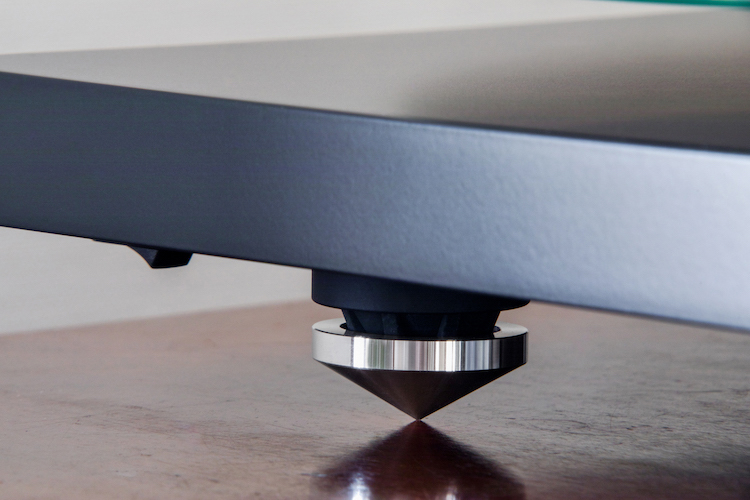
I believe this turntable punches above its weight and price point in its default configuration, without having anything added to affect its sound quality. But I found the bass response a bit lacking in punch or focus. With rock music, in particular, you really want to hear and feel the full thump of the bass guitar. I could definitely hear the bass guitar, but I wanted to hear it better.
So, I couldn’t resist trying to make it better. I am an inveterate tweaker and could not resist trying out a 400-gm record weight and my Herbie’s Audio Lab Way Excellent II turntable mat. I find that both of those items do tend to improve the sound quality of my Garrard 301 and Thorens TD-124 turntables, so why not try them on the NAD C Electronics 488?
Putting my 400-gm record weight went a very long way toward tightening the overall focus of the music, and the bass notes in particular. (This was with the included felt mat still on the glass platter.) With the record weight on, I could better distinguish the beginning, middle, and end of each time the player plucked his bass guitar string.
And when I replaced the stock felt mat with the Way Excellent II mat, sounds began to float more freely around the soundstage, as I believe the vinyl was much more stable and the stylus was less prone to micro-movements and could extract more low-level detail out of the grooves. The definition of each instrument in the sound stage also gained more focus.
Of course, adding a thicker turntable mat requires that you adjust the tonearm’s VTA, to keep the tonearm level and maintain proper stylus geometry. Which brings me to another great and surprising point about the C 588 turntable: its tonearm is fully adjustable. You can adjust all of its primary vectors: anti-skate, azimuth, VTA, and VTF. This means you can use the C 588 with a variety of cartridges and record mats. So, you can tweak the C 588 to best meet the needs of your ears and synergy of your system, which is sure to considerably increase the longevity of the C 588. Not bad for a $799 turntable.
I measured the speed and accuracy of the turntable with the RPM Pro application on my iPhone X. The app measured 33.41 rpm and 45.22 rpm for the two-speed settings. These are deviations well within broadcast standards and well outside of the audible range. I did notice that upon starting the turntable cold, it took about two minutes for the wow and flutter to subside and the platter to spin at a steady pace. Something to keep in mind, but definitely not a deal breaker.
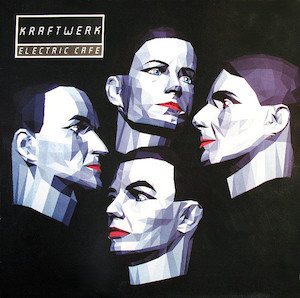
This album’s onomatopoetic opener, “Boom Boom Tschak” features extreme soundstage panning, deep bass notes, and enough 1980s nostalgia to give any turntable a leg warmer-equipped workout. The C 588 handled the song’s extremes admirably, but this is where the benefit of the record weight and turntable mat really became obvious.
As soon as I put the weight on the record, the soundstage exploded. Immediately, the front-to-back and side-to-side movement of the music, which is a very important aspect of this electronic music, became more active and easier to pinpoint. Simply put, more music started coming out of my speakers. Good fun without the tweaks, and even better fun with the tweaks.
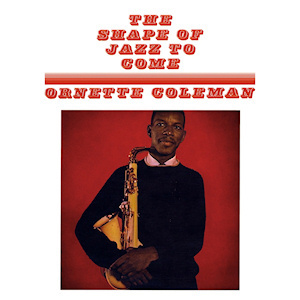
I enjoy using the acoustic free jazz recordings of the 1960s to test audio equipment, especially those which feature bands of five or fewer musicians. These recordings are excellent exemplars of how subtleties in tempo and timbre can be captured and then reproduced by a sound system.
For this session, Ornette Coleman played a plastic Grafton saxophone, and the NAD turntable and Ortofon cartridge were capable of distinguishing between the plastic saxophone’s occasionally shrill timbre and the warm brassiness of Don Cherry’s pocket trumpet as they danced around each other. Holding it all down was Billy Higgins on drums and Charly Haden on bass fiddle, and the NAD produced a soundstage wide enough for me to hear where those two were situated. And while dynamics and softness hold their own in these musical conversations, the Ortofon cartridge dug deep enough into the grooves to let me know when something sudden and loud occurred. Overall, the spirit of the recording was portrayed well by the turntable and cartridge.
- Excellent Ortofon 2M Red cartridge included and configured
- Provides lively and engaging analog sound
- Fully adjustable tonearm
- Attractive build quality and finish
- A better-quality turntable mat
NAD’s C 588 is a turntable that will provide rich and reliable analog playback for many years. It is attractive and offers quite a few features not usually found at its price point. While it can be easily enjoyed with its out-of-the-box settings, it is also fully configurable, which is sure to be attractive to those of us who enjoy fine-tuning and tweaking turntables.
For more information on the NAD Electronics C 588 turntable, go to https://nadelectronics.com/product/c-588-turntable


